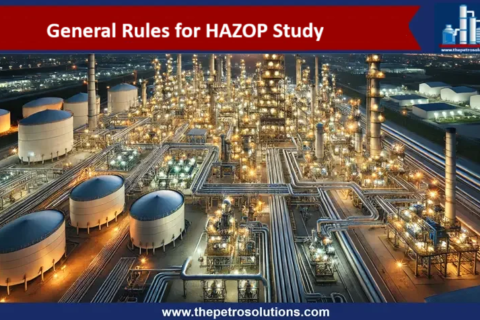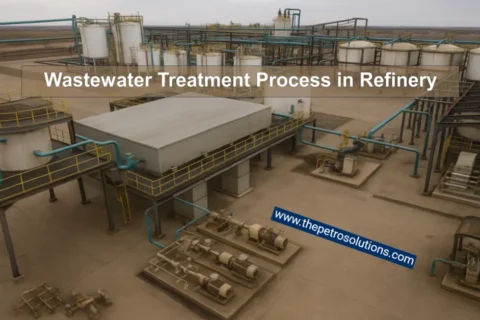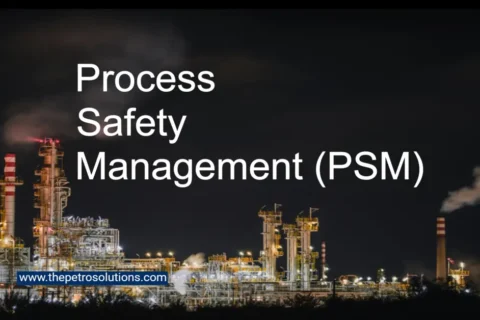Wastewater treatment process in refineries is a vital process that balances environmental responsibility with operational efficiency. Refineries use a large amount of water for different purposes and as a result generate massive amounts of wastewater full of contaminants like oils, heavy metals and organic compounds. Treating this wastewater is not just about meeting regulations but also its about protecting the environment, ensuring public health and boosting sustainability by recycling water.
Why Wastewater Treatment Matters in Refineries
Refineries use a lot of water for the purpose of cooling, processing and cleaning which result in wastewater full of pollutants like oils, suspended solids, heavy metals and organic compounds measured on the basis of Biochemical Oxygen Demand (BOD) and Chemical Oxygen Demand (COD). If these pollutants containing water released untreated, this can effect aquatic ecosystems, deplete oxygen in water bodies and violate strict environmental regulations.

Key Contaminants in Refinery Wastewater
Refinery wastewater is a complex mixture of pollutants, so that each require specific treatment:
- Suspended Solids (TSS): Particles like grit or sediment that can cloud water and clog downstream systems.
- Organic Compounds (BOD/COD): These are hydrocarbons and solvents that consume oxygen, which in result harm aquatic life.
- Oils and Greases: These are most common in refinery effluents, these can foul equipment if not treated.
- Heavy Metals: These are the toxic metals like zinc, cadmium and chromium that persist in the environment for a long time.
- Ammoniacal Nitrogen: High levels of this ammoniacal nitrogen can disrupt biological treatment processes.
- Pathogens: Microorganisms like E. coli that pose serious health risks.
- Volatile Organic Compounds (VOCs): These are potentially carcinogenic compounds requiring specialized removal.
Understanding of such contaminants is the foundation for designing an effective treatment system. Let’s explore below the step-by-step processes that refineries use to tackle with them.
The Wastewater Treatment Process in Refinery
Refinery wastewater treatment is a multi-stage process combining different physical, chemical and biological methods to remove contaminants and produce clean and reusable water. Following is how it works:
1. Preliminary and Primary Wastewater Treatment for Removing Solids and Oils
The first step in the wastewater treatment is to remove large debris and settleable solids to protect downstream equipment and reduce the overall treatment load.
- Screening: Bar screens or filters catch large objects like rags or sticks, preventing clogs in pumps and pipes. Regular monitoring prevents blockages of these screens, especially when debris levels are high in wastewater.
- Grit Removal: Flow through channels slow wastewater to about 1 ft/sec, which in result allow heavy particles like sand to settle.
- Sedimentation: With the help of primary clarifiers, heavier solids are allowed to settle and lighter materials like oils to float for skimming.
- Flotation: Dissolved Air Flotation (DAF), enhanced by polymers, uses air directly to lift oils and greases.
Purpose of Preliminary and Primary Treatment: These physical methods reduce mainly TSS and oils further protecting equipment and easing the burden on upcoming stages.
2. Secondary Wastewater Treatment for Breaking Down Organics
Secondary treatment uses microorganisms to degrade organic matter that significantly reduce BOD and COD.
- Activated Sludge Process: Microbes in aeration tanks consume organics, forming floc that settles in secondary clarifiers. Key parameters include mixed liquor suspended solids (MLSS) and mean cell residence time (MCRT).
- Trickling Filters: Wastewater flows over a specific type of media, coated with microbial biofilms, that achieve about 80-85% BOD and TSS removal.
- Anaerobic Treatment: This treatment is ideal for streams containing high COD. Anaerobic systems like Upflow Anaerobic Sludge Blanket (UASB) reactors produce less sludge (up to 10 times less than aerobic processes) and generate biogas, making them energy efficient.
- Membrane Bioreactors (MBRs): This is a combined biological treatment with filtration for larger BOD and TSS removal that help in meeting EPA standards of <30 mg/L for BOD and TSS.
Purpose of Secondary Treatment: These biological processes are cost effective for removing organic pollutants that are critical for meeting discharge standards.
3. Tertiary Wastewater Treatment for Reuse and safe Discharge
Tertiary treatment help in removing residual contaminants like nitrogen, phosphorus and fine solids in order to meet strict environmental standards and make water reusable.
- Filtration: In these, dual type media or sand filters remove TSS. With the passage of time high turbidity in the effluent from these filters indicates that the back washing is required to bring them back for working.
- Membrane Separation: In membrane separation, Ultrafiltration (UF) and Reverse Osmosis (RO) remove dissolved solids and salts which result in producing high purity water for cooling towers and boilers.
- Chemical Precipitation: Hydroxide ions from lime or caustic soda form insoluble metal hydroxides helping in removing heavy metals like cadmium. The sludge formed may require hazardous waste disposal.
- Adsorption: Granular activated carbon (a type of adsorber) traps volatile organic compounds and dissolved organics resulting in reducing COD and color.
- Advanced Oxidation Processes: In these processes, powerful hydroxyl radicals that are formed during Fenton oxidation or cavitation, help in breakdown of tough pollutants like chloroform, making them useful for treating wastewater with very high COD levels.
Purpose of Tertiary Treatment: Tertiary treatment ensures compliance with strict regulations (especially in sensitive ecosystems) and supports water reuse.
4. Disinfection of Wastewater for Eliminating Pathogens
Disinfection kills pathogens to make effluent safe for discharge and reusable.
- Chlorination: Addition of chlorine eliminate pathogens like E. coli. Excess chlorine then neutralized to remove taste and odor.
- UV Irradiation: It is an effective method but requires monitoring for bulb burnout or quartz tube fouling. Turbidity reduces UV efficiency by shielding pathogens.
- Ozonation: It is a potent disinfectant as ozone reverts to oxygen within 120 minutes, leaving no residual behind. It is energy intensive but effective for organic rich wastewater.
Purpose of Disinfection: Disinfection help in preventing waterborne diseases, ensuring public health and environmental safety.
5. Sludge Management for Handling Byproducts
With the help of above treatments sludge is generated which must be managed to minimize environmental impact.
- Thickening: Gravity or flotation thickeners concentrate sludge and reducing its volume.
- Digestion: Aerobic and anaerobic digestion stabilizes the sludge, with anaerobic systems producing biogas. Optimal volatile acid to alkalinity ratios (50:1) ensure efficient digestion.
- Dewatering: Filter presses or centrifuges reduce moisture to 10-15% solids to help easy disposal of sludge.
Purpose of Sludge Management: Proper management of sludge reduces disposal costs and environmental risks, especially for hazardous sludges containing heavy metals.
Contaminant Removal Efficiencies in Refinery Wastewater
The following table summarizes typical contaminant levels and treatment outcomes in refinery wastewater based on industry data:

Challenges in Refinery Wastewater Treatment Processes
Treating refinery wastewater is not as easy as it seems to be and comes with some hurdles:
- High COD/TDS: Wastewater containing high organic and salt loads require energy intensive processes like evaporation process.
- Toxic Pollutants: Heavy metals and refractory organics resist biological treatment and further needing costly AOPs or incineration.
- Space Constraints: Advanced systems like multi effect evaporators require significant space that is challenging for older refineries.
- Cost: Zero Liquid Discharge (ZLD) systems even are sustainable but have high capital and operational costs.
- pH Control: Maintaining a proper pH of 6.5-8.5 is critical for discharge compliance and optimizing processes like precipitation.
Solutions: Pilot plant studies of processes, SCADA systems for real time monitoring and proper tools for testing of materials help to optimize treatment processes and can overcome these above challenges.

Role of Recycling and Zero Liquid Discharge (ZLD)
Recycling of treated wastewater is a game changer for refineries as it reduces freshwater use and environmental impact. ZLD systems take this further by eliminating liquid effluent through:
- Pre-treatment to remove solids and oils.
- Biological treatment to reduce COD/BOD.
- Membrane concentration and evaporation to recover water.
- Solids separation via centrifuges or drying systems.
ZLD systems achieve over 90% water recovery and also producing high purity water for cooling towers, boilers and processes. In regions where water is available is small quantity and where industrial usage of water is projected to increase ZLD is critical for sustainability.
Recent Advancements in Wastewater Treatment in Refineries
Refineries are adopting innovative technologies to boost efficiency and save water:
- Membrane Bioreactors: Combining biological treatment with filtration for compact and high efficiency systems.
- Cavitation: Generates hydroxyl radicals to degrade high COD effluents cost-effectively.
- Electrochemical Methods: Remove salts and metals with low energy use at room temperatures.
- Nanotechnology: Photocatalysts like titanium dioxide show a promising behavior for pollutant degradation.
References:
- Spellman, F.R. (2009). Handbook of Water and Wastewater Treatment Plant Operations, Second Edition.
- Metcalf & Eddy (2013). Wastewater Engineering: Treatment and Resource Recovery, McGraw-Hill Education.
- Cheremisinoff, N.P. (2001). Handbook of Water and Wastewater Treatment Technologies, Butterworth-Heinemann.
- Ranade, V.V., & Bhandari, V.M. (2014). Industrial Wastewater Treatment, Recycling, and Reuse, Elsevier Butterworth-Heinemann.
- Woodard & Curran, Inc. (2006). Industrial Waste Treatment Handbook, Elsevier/Butterworth-Heinemann.
- https://www.sciencedirect.com
- https://www.saltworkstech.com
- Muzammal Liaqathttps://thepetrosolutions.com/author/muzammal123/
- Muzammal Liaqathttps://thepetrosolutions.com/author/muzammal123/
- Muzammal Liaqathttps://thepetrosolutions.com/author/muzammal123/
- Muzammal Liaqathttps://thepetrosolutions.com/author/muzammal123/





